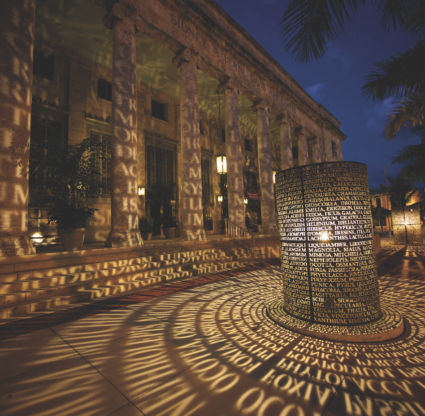Get in Gear
It’s true, bicycling takes more equipment than running or walking, but being properly outfitted really does result in a safer and more comfortable ride. Here’s what you need:
A bike: Sure, you could spend $8,000 on a purebred racing machine, but for casual riding that seems a little excessive. Find a bike that fits you well—any bike store professional will be able to tell you what size you need and how to adjust the seat and handlebars to the right height. One word of warning: If you do opt to buy a bike from a big-box retailer, your first stop on the way home should be at a reputable bike store. The people who assemble bikes at big-box retailers are not bike mechanics, and often bolts are not tightened the way they should be.
A helmet: Technically, anyone over age 16 isn’t required to wear a helmet, but why wouldn’t you? Besides, brain safety is sexy! Like a bike, proper helmet fit matters. The helmet should be snug but not tight, and make sure it covers your forehead. Also, if you ever crash and hit your head, replace the helmet.
Padded shorts: These are optional, but if you spend more than an hour in the saddle they become slightly less optional—especially if you want to walk normally the day after you ride. (Also, bike shorts should be worn without underwear—this is the one time you can ignore what your mom said about never leaving the house without underwear.)
Lights: Florida law requires any cyclist out after dark to have a white light on the front of his or her bike and a red light on the back. Buy one that blinks—it’s more noticeable to drivers and it majorly extends the light’s battery life.
A flat tire repair kit: Even if you don’t know how to use it, bring it. The biker code of ethics requires more experienced bikers to help newbies, but only if they have their own spare tire.
Identification: Just in case the unthinkable happens, having an ID on you is crucial. Your driver’s license is one option, or consider ordering a RoadID, an engraved bracelet that lists all of your medical conditions and who to contact in an emergency.

The Basic Rules of the Road
Ride with traffic: Runners and walkers should travel facing oncoming traffic, but cyclists are considered vehicles and should travel in the same direction as traffic.
Know the dangers of sidewalk riding: “Get on the sidewalk!!!” is the No. 1 thing cyclists hear yelled at them, but the sidewalk isn’t really a safe place to ride. Because you’re out of the line of sight of most drivers, riders on the sidewalk are much more likely to be hit by someone turning right. In many municipalities it’s even illegal to ride on the sidewalk because of the danger it poses to pedestrians.
Stop at stop signs: As annoying as it is to come to a complete stop when no one is around, it’s the law. Bicyclists have to follow the same rules drivers do—even when no one is looking.
Pass on the left: When passing slower riders or pedestrians, call “on your left” and then make your pass when it’s safe to do so.
Know what you’re entitled to: Cars have to give 3 feet of space when they pass a cyclist, and if there’s not enough room for a car to safely pass, the cyclist may take the whole lane. Still, it’s best to try to let cars pass you as soon as it’s safe—sharing the road goes both ways.




